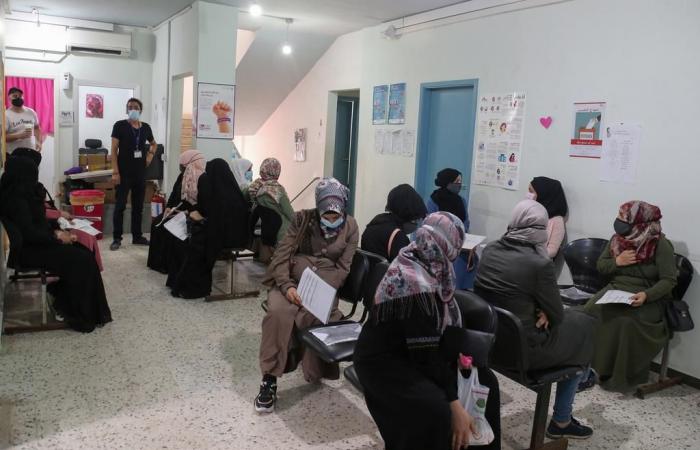Letter of the day –
My fatigue is not only personal, it is collective
Ali Almohammed, medical coordinator of Doctors Without Borders (MSF) in Lebanon, sent us this very touching letter.
Letters from readers
Published today at 7:47 a.m.
The waiting room on the first floor of the Doctors Without Borders (MSF) clinic at the Burj al Barajneh refugee camp, south of Beirut, Lebanon, July 8, 2021.
KEYSTONE/EPA/NABIL MOUNZER
Subscribe now and enjoy the audio playback feature.
BotTalk
Geneva, November 12.
Beirut contains a part of my past. As I lived and worked there many times between 2019 and 2021, its streets and people became deeply connected to my memories. Today, they are overshadowed by the suffering of the population. Classrooms, once bustling, welcome children and parents who struggle against the cold and fear, dreading the next air strike.
Every day I visit these shelters. Everyone I meet dreams of a home where their children are safe. This aspiration awakens painful memories in me: the flight from Syria in 2014, the months spent between various shelters in Turkey and Iraqi Kurdistan, without ever knowing where to go next.
I wanted to become a doctor to treat and save lives. But after more than ten years with Doctors Without Borders, in Syria, South Sudan, Ukraine, Iraq, Sudan and now Lebanon, I have seen lives beyond repair. Each mission is a chapter of resilience in the midst of exhausting pain, as much for others as for me.
I am tired of witnessing this suffering and the systems that perpetuate it. My journey began in 2012, in Aleppo, where I studied medicine and built my future. The war scattered me and forced me to flee, leaving me uprooted from everything familiar. I lost my home, my sense of peace and, with each move, this anxiety: when will the next tragedy come?
I find this exhaustion in the faces I meet. In the camps in Iraq, the shelters in Lebanon or the hospitals of South Darfur, the people I meet are broken, having survived bombs, epidemics, and bearing deep scars.
I see this trauma in them, but I carry it too. I see the faces of patients and friends lost in Kobané, children whose lives ended with the conflict. These memories, engraved in me, remind me of the limits of our action. Our efforts are not enough to repair the systems that perpetuate this suffering.
However, moments of humanity push me to move forward. The smile of a mother who sees her child treated, the thanks of a woman who has lost everything to whom I gave her medication. These moments of resilience remind me that there is always light in the midst of darkness.
My fatigue is not only personal, it is collective. It is also that of all humanitarian workers who, on the front line, often act in indifference. It is the exhaustion of a world that has seen too much suffering, with too little change.
I dream of a world where families are no longer torn apart by violence, where children grow up in peace, where doctors treat without fear for their lives. A world where I could be with my son, in a place where peace would no longer be an illusion, and the world would stop being exhausted.
“The Tribune of Opinions”
With the Tribune of Opinions, find analyzes, editorials, readers’ letters, expert opinions… So much insight to form your own opinion every Monday.
Other newsletters
Log in
Did you find an error? Please report it to us.
1 comment






